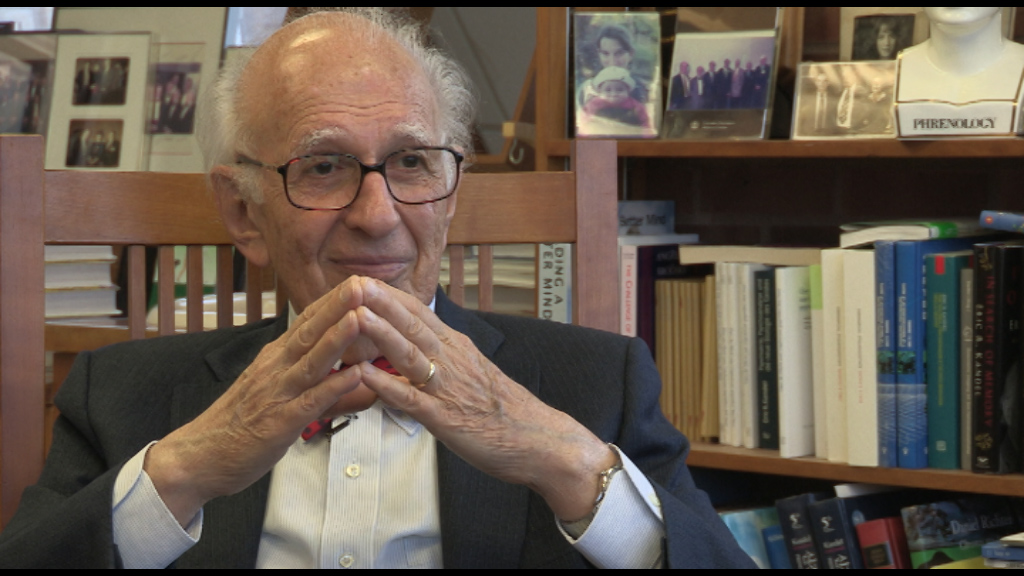NEXT STORY

How a review inspired a textbook
RELATED STORIES

NEXT STORY

How a review inspired a textbook
RELATED STORIES


|
Views | Duration | |
|---|---|---|---|
| 41. Cell accepts my article for publication | 107 | 03:09 | |
| 42. Discovering the machinery for turning on long-term memory | 82 | 03:08 | |
| 43. Investigating the initiation and maintenance of long-term memory | 52 | 05:28 | |
| 44. What is so special about prions? | 77 | 04:42 | |
| 45. The characteristic features of prions | 53 | 01:34 | |
| 46. Alden Spencer | 53 | 05:12 | |
| 47. S Channel | 34 | 01:50 | |
| 48. How a review inspired a textbook | 48 | 02:19 | |
| 49. Coincidences that influenced my work | 69 | 04:39 | |
| 50. Nurturing the ideas of post-doc students | 56 | 00:54 |


Very lucky when we were working with cyclic AMP that Steve Siegelbaum whom I'd met very briefly, because he was working in Paris when I visited there one time, was recruited to Columbia in the pharmacology department, and we had talked a little bit about working on Aplysia when we met in Paris, and he worked in Aplysia, and he isolated channels using patch clamp technique which was a very, you know, modern technique at that time. Very few people had mastered it. He had spent some time with Bert Sakmann and learned how to do it, and isolated a potassium channel modulated by serotonin and cyclic AMP. Cyclic AMP stimulated by serotonin closed that potassium channel, and that was one of the contributing factors to the broadening of the action potential with sensitization which led to increased calcium influx and enhanced transmitter release.
And we called that the S channel because it was named after Steve, and it was modulated by serotonin.
Steve has become one of my closest friends at Columbia, spectacular scientist, gone on to do a number of wonderful things since then, including recently showing that the area CA2 in the hippocampus is involved in social behavior, may be impaired specifically in schizophrenia, is now chairman of the neuroscience department which he took over from John Koester, I think you know who John Koester is. And like John Koester has done a fabulous job leading the department.
Eric Kandel (b. 1929) is an American neuropsychiatrist. He was a recipient of the 2000 Nobel Prize in Physiology or Medicine for his research on the physiological basis of memory storage in neurons. He shared the prize with Arvid Carlsson and Paul Greengard. Kandel, who had studied psychoanalysis, wanted to understand how memory works. His mentor, Harry Grundfest, said, 'If you want to understand the brain you're going to have to take a reductionist approach, one cell at a time.' Kandel then studied the neural system of the sea slug Aplysia californica, which has large nerve cells amenable to experimental manipulation and is a member of the simplest group of animals known to be capable of learning. Kandel is a professor of biochemistry and biophysics at the College of Physicians and Surgeons at Columbia University. He is also Senior Investigator in the Howard Hughes Medical Institute. He was the founding director of the Center for Neurobiology and Behavior, which is now the Department of Neuroscience at Columbia University. Kandel's popularized account chronicling his life and research, 'In Search of Memory: The Emergence of a New Science of Mind', was awarded the 2006 Los Angeles Times Book Award for Science and Technology.
Title: S Channel
Listeners: Christopher Sykes
Christopher Sykes is an independent documentary producer who has made a number of films about science and scientists for BBC TV, Channel Four, and PBS.
Tags: Aplysia, Steve Siegelbaum
Duration: 1 minute, 50 seconds
Date story recorded: June 2015
Date story went live: 04 May 2016